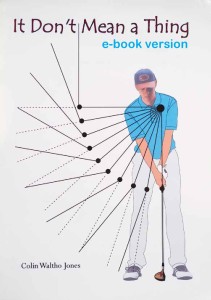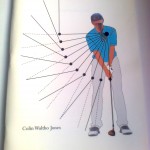17th July
So, it’s a Wednesday. It’s six o’clock in the evening and it’s boiling. The green is fast, the sun is fierce and I’ve left my floppy hat at home. Bad start.
It’s my first game of singles for years. Singles is the format that dominates crown green bowls – the version of the game I grew up playing – but only gets played in flat green bowls in long drawn out tournaments that can take months to complete. The dominant format in flat green bowls is “rinks”. This is the format where a side is made up of four mini-teams of four players: each player having two woods each.
I’m a skip. This means that I play last in my squad of four. When it is my turn to bowl there are at least 12 woods already around the jack. The art of skip bowling is to choose the right option from a considerable number and then execute that precise shot. Not often is the right option merely to bowl the wood close to the jack. Not often, actually, is bowling the wood close to the jack an available option anyway, when there can be up to 12 woods barring the way.
Singles in flat green bowling is usually played with four woods per player. The format chosen for our first club competition in the last 5 years at least, is a two-wood singles. So, I’m stood on the mat, in a searing heat, facing a bare jack on a fast green with only two woods to play. It’s enough to make me homesick, and a sense of being back in Llanrwst playing bowls on a lightning fast green wells up in me. Momentarily, I think of my Dad: he would have loved this.
It’s not the only memory to make its presence felt as I slip to a wholly unexpected 2-8 scoreline (the format is first to 21). My opponent is playing well – much better, in fact, than I have ever seen him play before. In the first few matches of this tournament, the standard of play of the team’s lesser lights (in what is there first ever game of singles) has quickly become a talking point: there’s something going on. Players who, in the rinks format in a Saturday league game, often perform hopelessly are playing heroically in a two-wood singles competition. I thought it would be the opposite. In fact, when I heard that there was a desire for some sort of singles competition, I feared the worst. I fully expected the beginners and lesser lights to feel exposed by the lack of hiding places in singles: I put their enthusiasm down to naivety.
How wrong I was. To a man they have loved every minute of the competition. So, what is going on?
1. Two-wood flat green singles is a less demanding game than crown green singles. This is because it is technically easier to get a wood close to a jack when you are bowling up and down the same strip of turf. The lines to the jack barely alter and the variations in length between jack and mat are limited.
2. Playing for yourself, as it were, is less demanding than playing for a team – especially when that team is part of a larger team. [One of the great lost opportunities of modern sport is that professional golf has evolved into an individual game with the strokeplay format dominant. Few, if any, of these tournaments can match the sustained interest and competitive intensity that has been witnessed at the Ryder Cup over the past couple of decades. For some reason professional golf has not evolved into a city/state based team game with national leagues. It’s a shame.]
3. They haven’t experienced the crippling humiliation of being thrashed at a game that only requires you to roll a bowl a few yards along a piece of manicured turf – and having no one else to blame.
Okay, I’m 8-2 down to this gentleman who is playing a lot better than I expected. My rhythm is good. My deliveries have been fine. My visualisation is starting to come together. I’m doing fine; it is just that his woods are ending up closer than mine.
His first one on the next end is another decent wood but beatable. I step on to the mat; I visualise . . . well I try to visualise, because what happens is that being 2-8 down to a player I know I am expected to beat easily, and playing singles on a fast green with only two woods, brings back a sense of all the humiliating defeats I had suffered as a player before I discovered the answer to “timing”. It is part of the nostalgic memory I mentioned earlier. My attempts at visualisation are thwarted by panic. The panic is distinctive; it is the notion that I am utterly unable to put this wood in my hand anywhere close enough to the jack to nip this humiliating experience of falling behind to a lesser player in the bud. The panic blocks all my attempts to visualise the rhythm etc. It also pushes me to throw the wood before I am ready, with inevitable consequences.
Encouraged by my dismal effort, my opponent bowls an even better second and is lying a decent two and looking at going 10-2 up. This is a crucial moment in the match. By the time it is my turn to occupy the mat, I have said “hello” to my panic, made myself smile at my own frailties, taken a very deep breath, searched for a very happy memory of my delicious rhythm, adopted a somewhat cocky pose and forced the panic to become my servant by using it to intensify the visualisation of the shot I need.
On the mat, I’m in a bubble and I execute a lovely, lovely rhythm. The wood hits the spots and curves away at that delicious pace that you just know is the right one. It rolls to within a few inches of the jack. My opponent nods and mutters acknowledgement; I nod back and say: “Thank you”.
He plays well for the rest of the game but I win 21-12. Another victory over the past.



No comments yet.